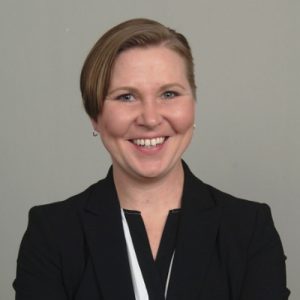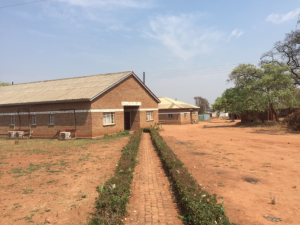Eliminating and controlling malaria in Southern Africa

Assistant Professor Kelly Searle in the division of Epidemiology & Community Health has recently come from the Johns Hopkins University, where she conducted her post-doctoral work in the study of malaria in Zambia using epidemiological methods combined with geographic information science (GIS) and spatial analyses.
Searle’s first personal exposure to global health was during her time as a Peace Corps volunteer in Mozambique teaching high school biology. She began to notice that there tended to be very high absences. That was the first time that she experienced the true impact of malaria on communities, setting her up for her career in epidemiology research in southern Africa.
“I would have half of my students absent over the three month malaria season… It was difficult for anything to happen, and it was difficult to conduct business or keep up with the curriculum because of this disease”.
This eventually informed her extensive work in malaria transmission dynamics in Zambia, making her one of the few researchers at the University of Minnesota focused on researching malaria transmission.
Her two research sites in northern and southern Zambia are very different. Southern Zambia has effective malaria control, wherein the disease is in a steady state of decline from endemic to being eliminated. The main strategy in this context is to perform intensive case investigation to rid the parasites altogether.
“It’s so hard to get rid of malaria because once they’re infected they often don’t show symptoms. A lot of work that I do is to implement the best methods to find that asymptomatic reservoir. Many of us are using GIS and molecular markers of the parasites to see the spatial extent of transmission events. We collect the coordinates of where the households are, and then link it to vegetation indices, the weather, and potential mosquito breeding sites. From there, we try to predict spatially where transmission is likely to occur.”
 The situation is vastly different in northern Zambia, where the transmission rates are very high – upwards of 50 to 70 percent. The goal is to approach control of the disease instead of elimination. This means implementing cross-sectional surveys to examine the risk factors for infections and to gauge the degree of symptoms that actually result in someone seeking healthcare. Lastly, they administer a rapid diagnostic test and use molecular techniques to compare the genotypes of the different parasites. They are then able to link this to the ecology of the surrounding areas.
The situation is vastly different in northern Zambia, where the transmission rates are very high – upwards of 50 to 70 percent. The goal is to approach control of the disease instead of elimination. This means implementing cross-sectional surveys to examine the risk factors for infections and to gauge the degree of symptoms that actually result in someone seeking healthcare. Lastly, they administer a rapid diagnostic test and use molecular techniques to compare the genotypes of the different parasites. They are then able to link this to the ecology of the surrounding areas.
“In areas where malaria is very high, it is perceived almost like a common cold. A lot of people don’t seek care, because they might not see it as a big deal, especially amongst older adolescents.”
Searle’s work is inherently cross-disciplinary, pulling from methods used in both environmental health and epidemiology.
“I find it to be rewarding… they want to see malaria eliminated. We get to work with the implementers of programs all the way up to the policymakers.”
Recently she has been trying to establish a research site in Mozambique from where she worked over a decade ago. She has even encountered former students in Mozambique who are now providing the foundations to continue this research not only across sectors, but nations.
Because eradicating malaria is a long-term goal in WHO, working across countries, disciplines, and sectors will be essential to achieving global health progress of the future.
